Ten Highlights of The National 2019, Sydney's Citywide Exhibition of New Australian Art
Watch paintings burn, play inside a synthesiser and eat breast-shaped ice cream cones at the Art Gallery of NSW, the MCA and Carriageworks.
It's time to hit the galleries, as The National has returned. Having launched in 2017, the massive biennial showcase of contemporary Australian art exhibition is again happening across Carriageworks, the Museum of Contemporary Art Australia and the Art Gallery of NSW. This year, the program features works from 65 emerging, mid-career and established artists in three incredibly thought-provoking and impressive exhibitions.
The showcase brings together artists from all over the country, with fresh perspectives on Australia that span culture, gender and place. Expect installations, performances, sculptures, videos, paintings and drawings that examine what it means to be Australian. Here are ten highlights that you can't miss.


Zan Wimberley.
GHOST LINE BY TOM MÙLLER, CARRIAGEWORKS
When you're checking out the exhibition at Carriageworks, be sure to stand outside at 11am and 4pm, when Ghost Line is activated. The installation transports viewers back in time to the days when Carriageworks was the Eveleigh Railway Workshops. The entire laneway is flooded with smoke, to the point where your view of your surroundings is completely obscured. Suddenly, it really seems as if a steam train is about to pull in, making a grand return to the old tracks that still line the path. It's a surprisingly simple yet disorienting experience, making this site-specific performance a must-see.
Ghost Line is activated at 11am and 4pm every day.

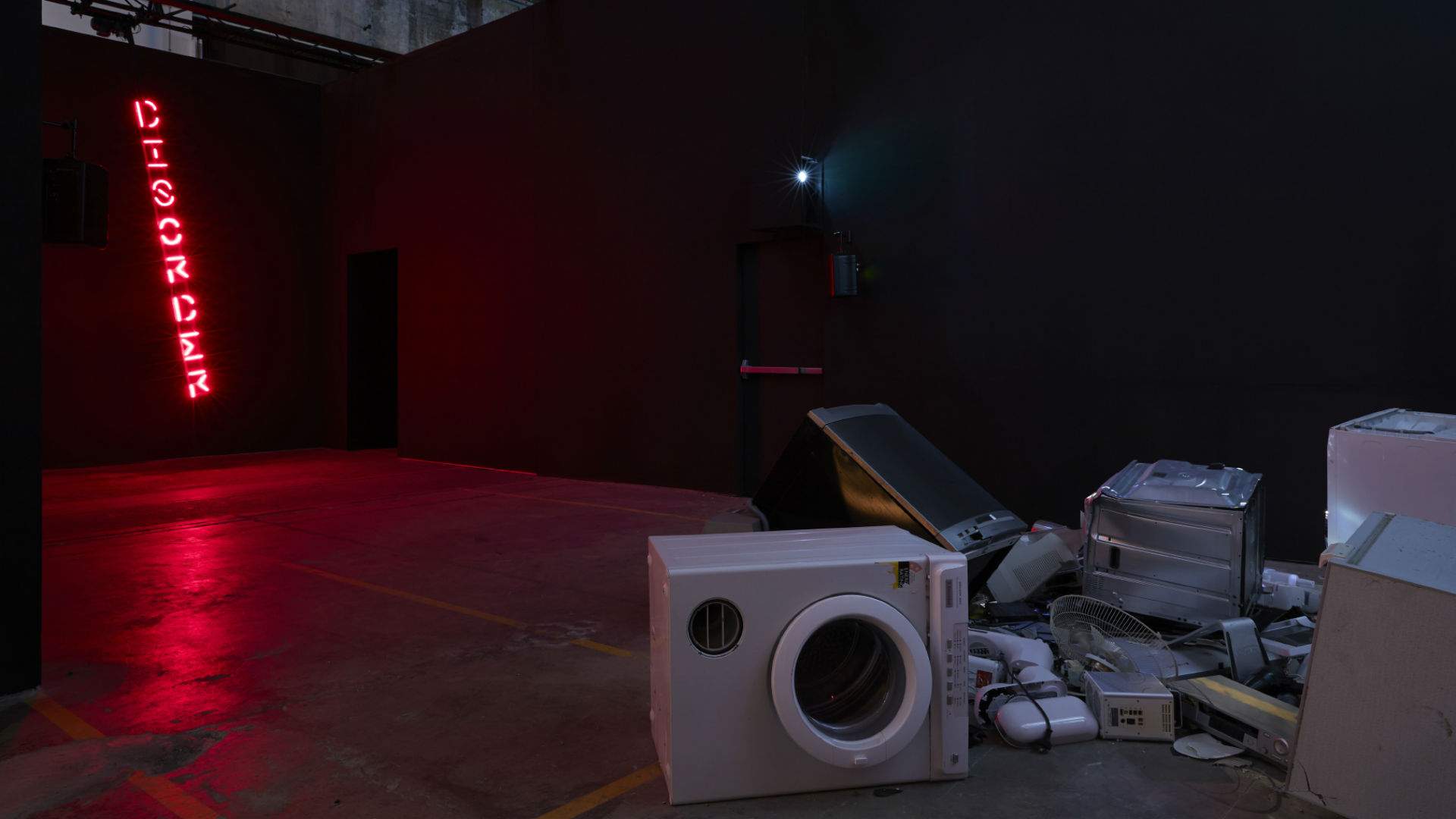
Zan Wimberley.
(DIS)ORDER BY EUGENIA RASKOPOULOS, CARRIAGEWORKS
Eugenia Raskopoulos' (dis)order takes on many layers. Part projected performance and part installation, the artwork instantly draws the viewer into the scene. On a life-like projection, Raskopoulos hovers over a tower of domestic appliances, then throws them one at a time onto (what seems like) a growing pile of broken junk. Of course, this pile is not growing, but, you cannot help but cringe with each perfectly timed crash. On the wall opposite, a neon sign blinks between 'order' and 'disorder', showing the thin line between those two states. The overall effect is an immersive, timely and defiant feminist performance that will keep you watching for far too long.

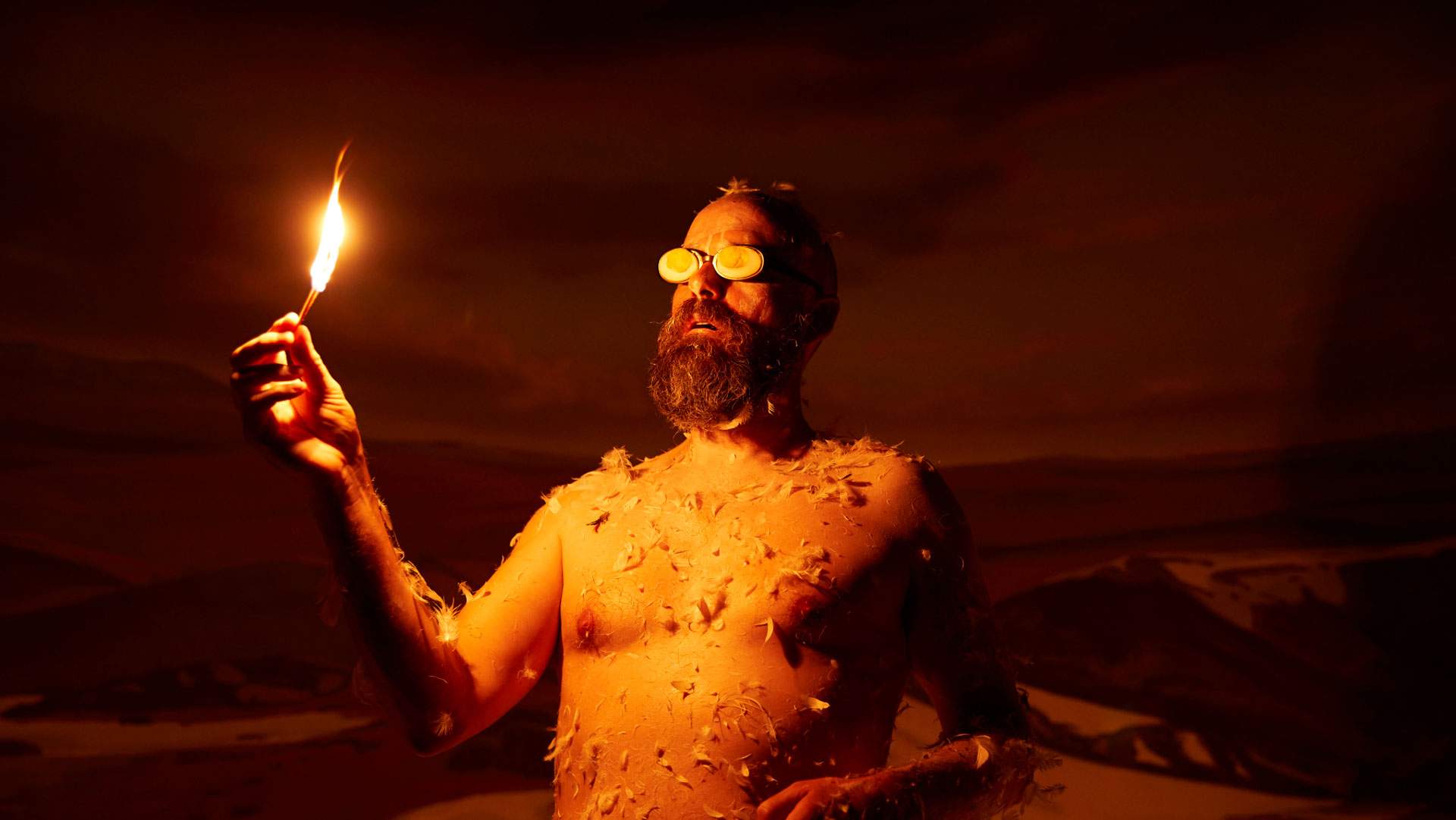
Zan Wimberley.
SONG FOR VON GUÉRARD BY MARK SHORTER, CARRIAGEWORKS
Hidden at the back down several pitch black corridors, Song For von Guérard is easy to miss — and, depending on how easily you're disturbed, you may wish you had. Mark Shorter's piece is inspired by the 1863 Australian landscape painting by Austrian painter Eugene von Guérard titled North-east view from the northern top of Mount Kosciusko. It's a comment on how modern Australian identity has been defined by exaggerated European ideas of our country.
Traverse the cave-like rooms and you'll stumble into a dimly illuminated space where a replica of the painting spans an entire wall. But watch out, on performance days those dark chambers will be haunted by Shorter's time-travelling persona called Schleimgurgeln — he takes the disturbing form of a naked man covered in feathers with boiled eggs for eyes. The character will hold a lit match over the piece, physically destroying the colonial European gaze of Guérard's painting. It's strange, it's creepy and it challenges old notions of Australian identity.
Performance times are noon–6pm on March 31; April 6, 20, 27; May 4, 18, 25; and June 1, 15, 22.
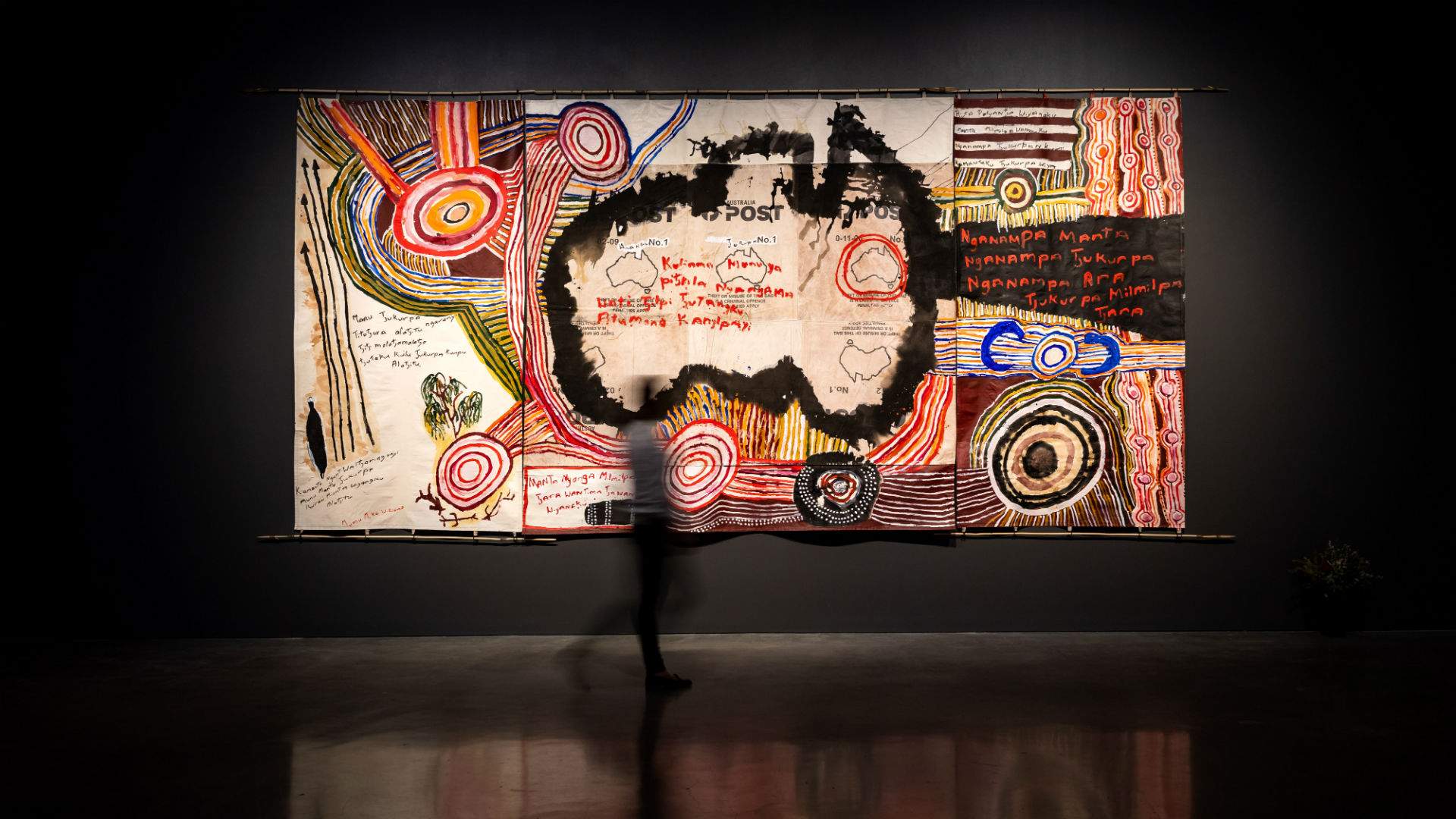
Photo by Jacquie Manning. Image courtesy of the artist and Mimili Maku Arts.
KAMANTAKU TJUKURPA WIYA BY KUNMANARA (MUMU MIKE) WILLIAMS, MCA
Kamantaku Tjukurpa wiya is the last in a three-year series of paintings, all created on repurposed canvas mailbags. While this is the artist's largest work, its message is bigger still. A comment on the conflict between Commonwealth and Anangu law, the painting is an urgent demand for recognition of the enduring culture, languages, power and humanity of Tjukurpa — the religion, law and moral systems of the Anangu people. It's a politically charged work, centring on an outline of Australia that isn't restricted by state or territory. The words written in Pitjantjatjara need no translation — instead, these words call for respect of the language and for the true owners of the land.

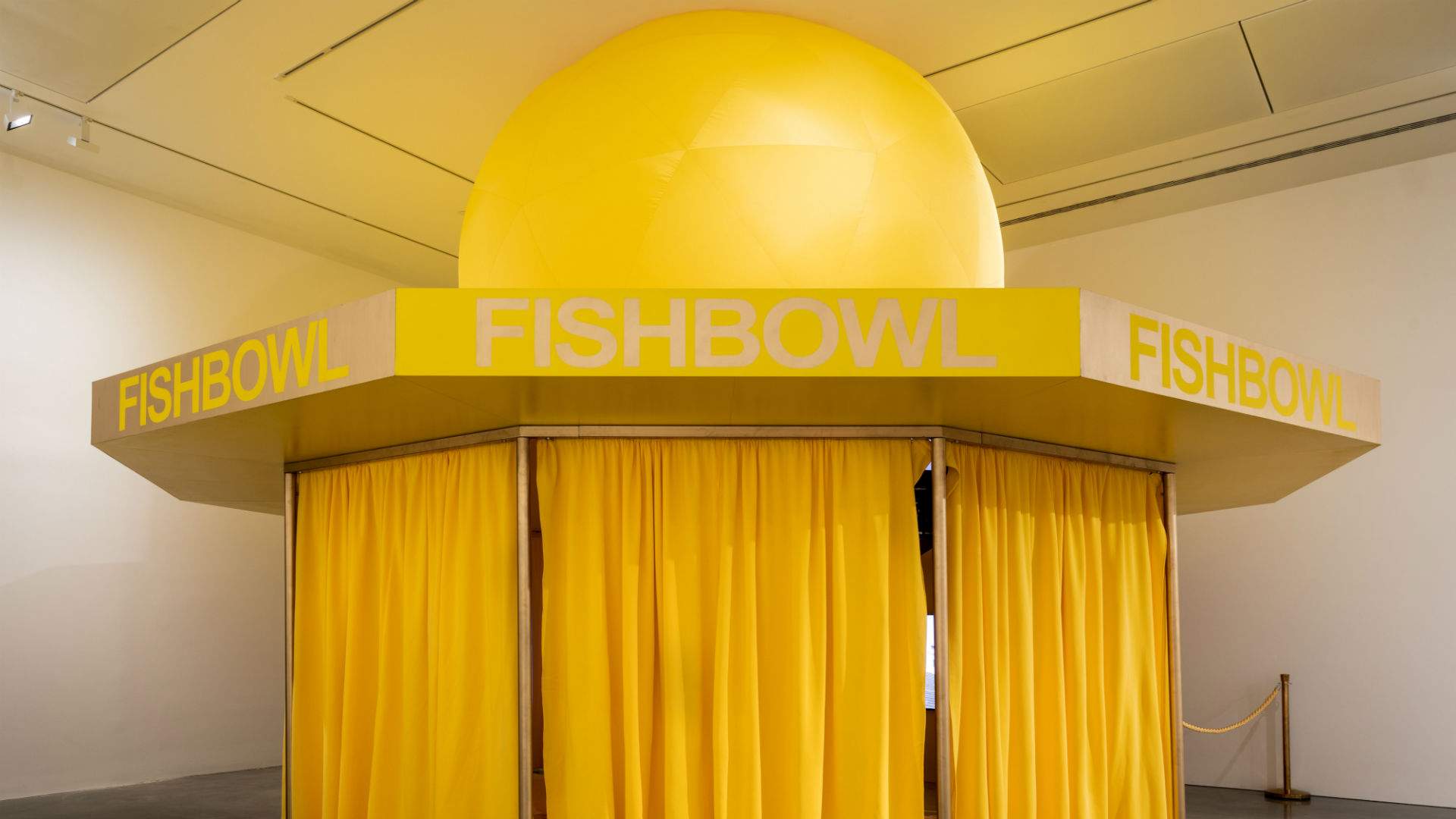
Photo Jacquie Manning. Image courtesy of the artist and the MCA.
THE AUSTRALIAN UGLINESS BY EUGENIA LIM, MCA
Remove your shoes and enter the domed 'fishbowl', in which a lineup of yellow bean bags imitate a mini-cinema. Lim's three-channel video installation The Australian Ugliness is a reinterpretation of Neptune's Fishbowl restaurant in South Yarra, designed by architect Robin Boyd. The film moves through 30 architectural sites in Melbourne, Sydney, Canberra and regional locations — these include the Sydney Opera House, the Sirius Building, the Melbourne Recital Centre and the Australian Islamic Centre. Apart from the buildings, the film's central figure is the gold-suited 'ambassador' of Lim's previous works Yellow Peril (2015) and The People's Currency (2017). In her work, Lim uses architecture to convey messages on gentrification and a loss of heritage, posing the question "who holds the right to design our spaces?" Her film calls on viewers to questions what architecture says about our culture and to learn to embody the spaces we inhabit.


Photo by Jacquie Manning. Image courtesy of the artist and the MCA.
FORT THUNDER BY LUCAS ABELA, MCA
Fort Thunder: An Electro-Acoustic Playground is just what it sounds like. Artist Lucas Abela encourages participants to interact and quite literally play in his installation, which is a synthesiser that generates electronic noises as you touch it. These impromptu performances follow the artist's mantra that experiential music is meant to be played more than it is observed. The 'instrument' is best played with three points of contact, but is otherwise dependent on participants' creativity. Don't expect a trance-style sound to be emitted, either — it's more akin to an amplified rock 'n' roll guitar riff. This one is a loud and intense experience, but it's also a whole lot of fun. 
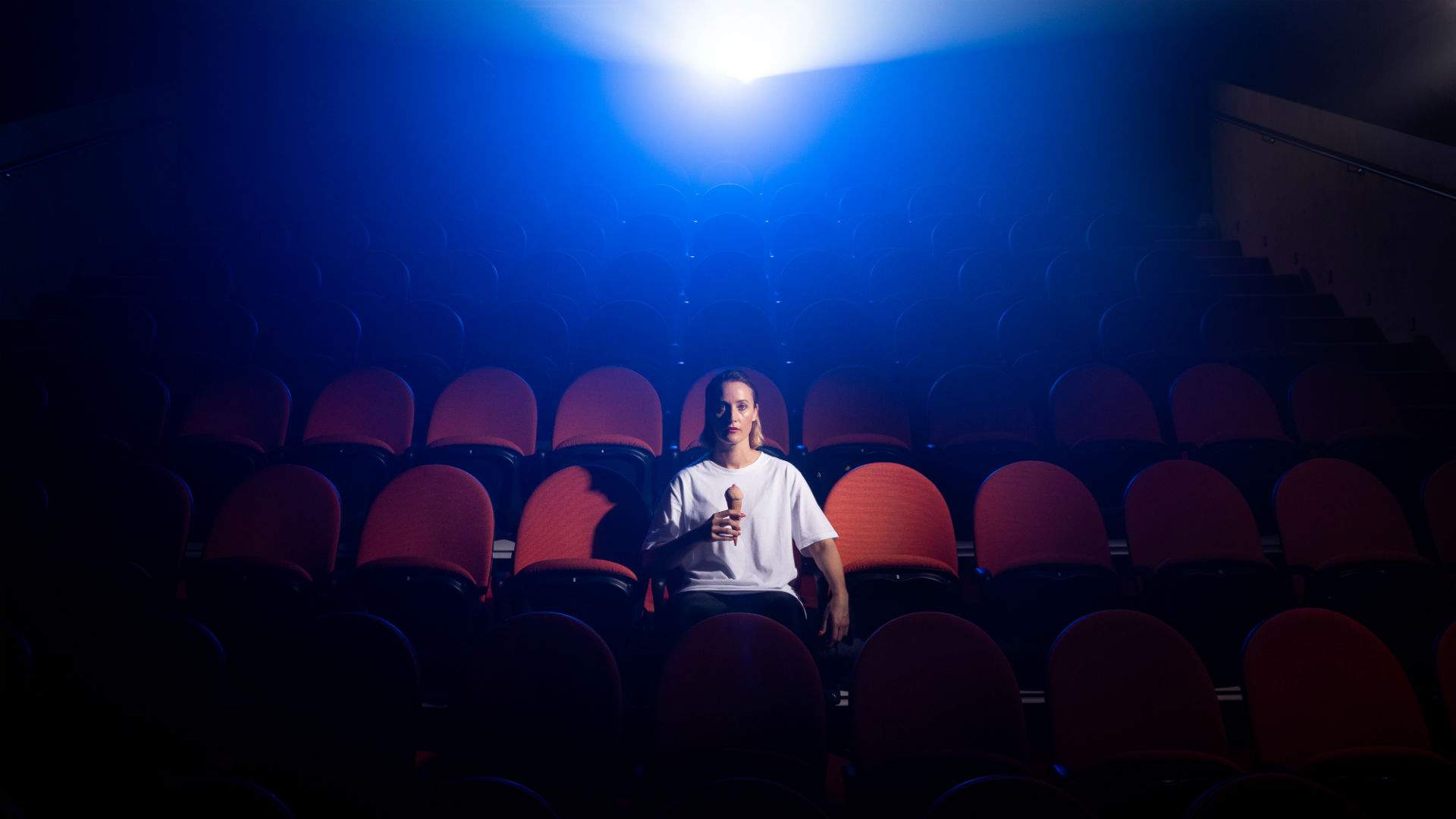
Daniel Boud
LICK LICK BLINK BY WILLOH S. WEILAND, MCA
Willoh S. Weiland's striking new work combines film, performance and breast-shaped gelato. Lick Lick Blink is a ten-minute cinema experience, that only one person can view at a time. The work is inspired by the #MeToo movement and examines how female images are consumed in film. Expect the screen to be solely occupied by women — a rarity in mainstream cinema. And, to take this experience to a more immersive level, Gelato Messina has created a range of breast-shaped, nipple-topped, milk-flavoured ice cream cones for participants to eat while figuratively devouring the female images on screen. The chocolate coating comes in a variety of shades, which is a reflection of the female diversity that is all too often absent in film. It's truly a trip to the movies like no other — make sure to check the performance schedule so you don't miss out on this one.
Lick Lick Blink screenings are free, but booking is required in-person on the day at the MCA information desk (level one). For the full performance schedule, head online.

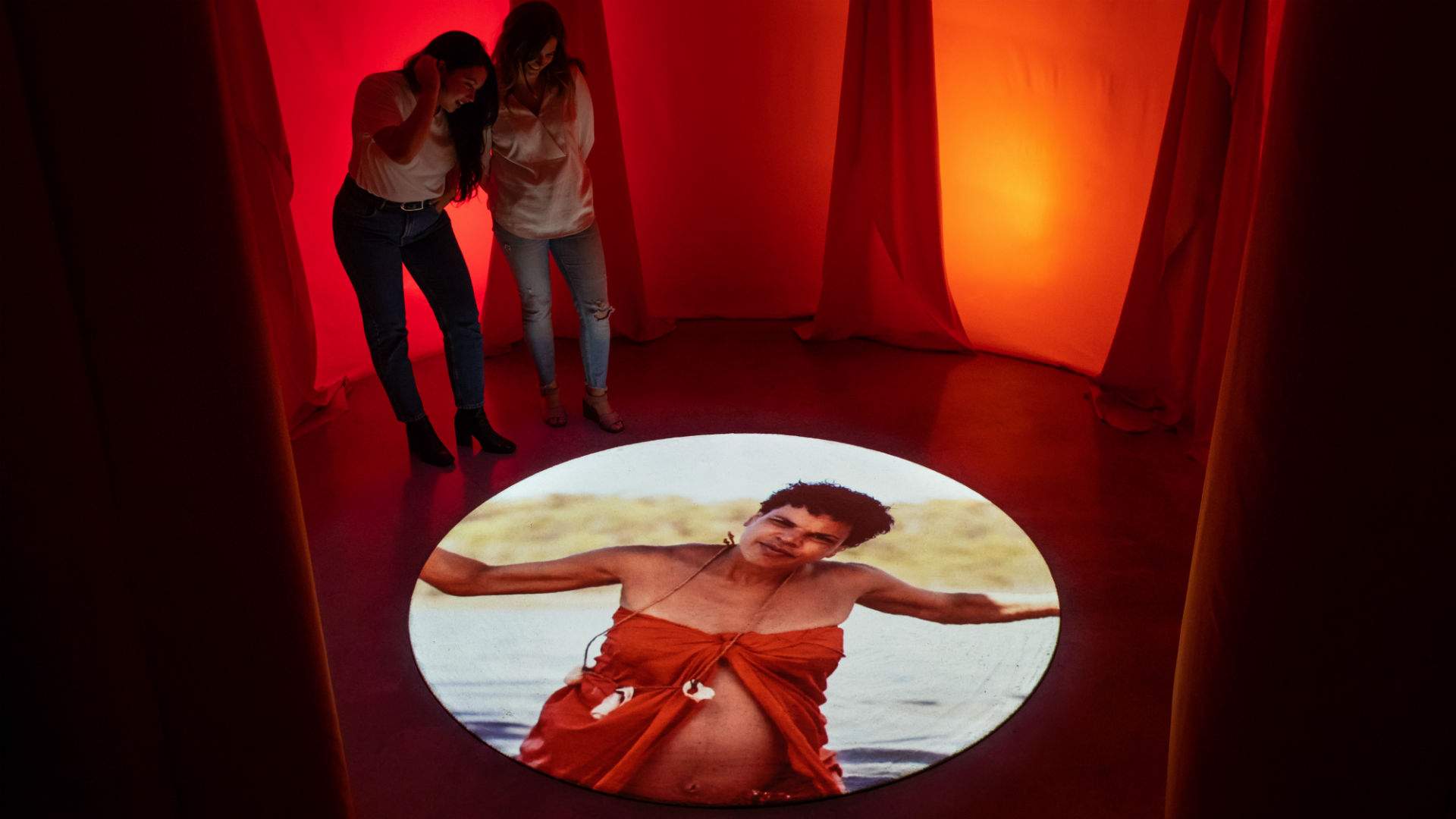
Photo by Jacquie Manning. Image courtesy of the artists and the MCA.
HEALA BY HANNAH BRONTË, MCA
Hannah Brontë's powerful audio video installation Heala combines hip-hop with themes of trauma, Country and the womb. Brontë describes the installation as "swimming in one's grief, right down to the depths of it...[and] washing off our own trauma stories". The orange drapes are meant to replicate the light and feeling of being back in the womb, while a music video of sorts is projected in the centre. The work speaks to female trauma and empowerment within the First Nations communities and beyond. Her work examines traditions of First Nations women to tell a rhythmic story of what overcoming trauma can look like, and is a powerful reminder of female strength and resilience in the face of pain and loss. 
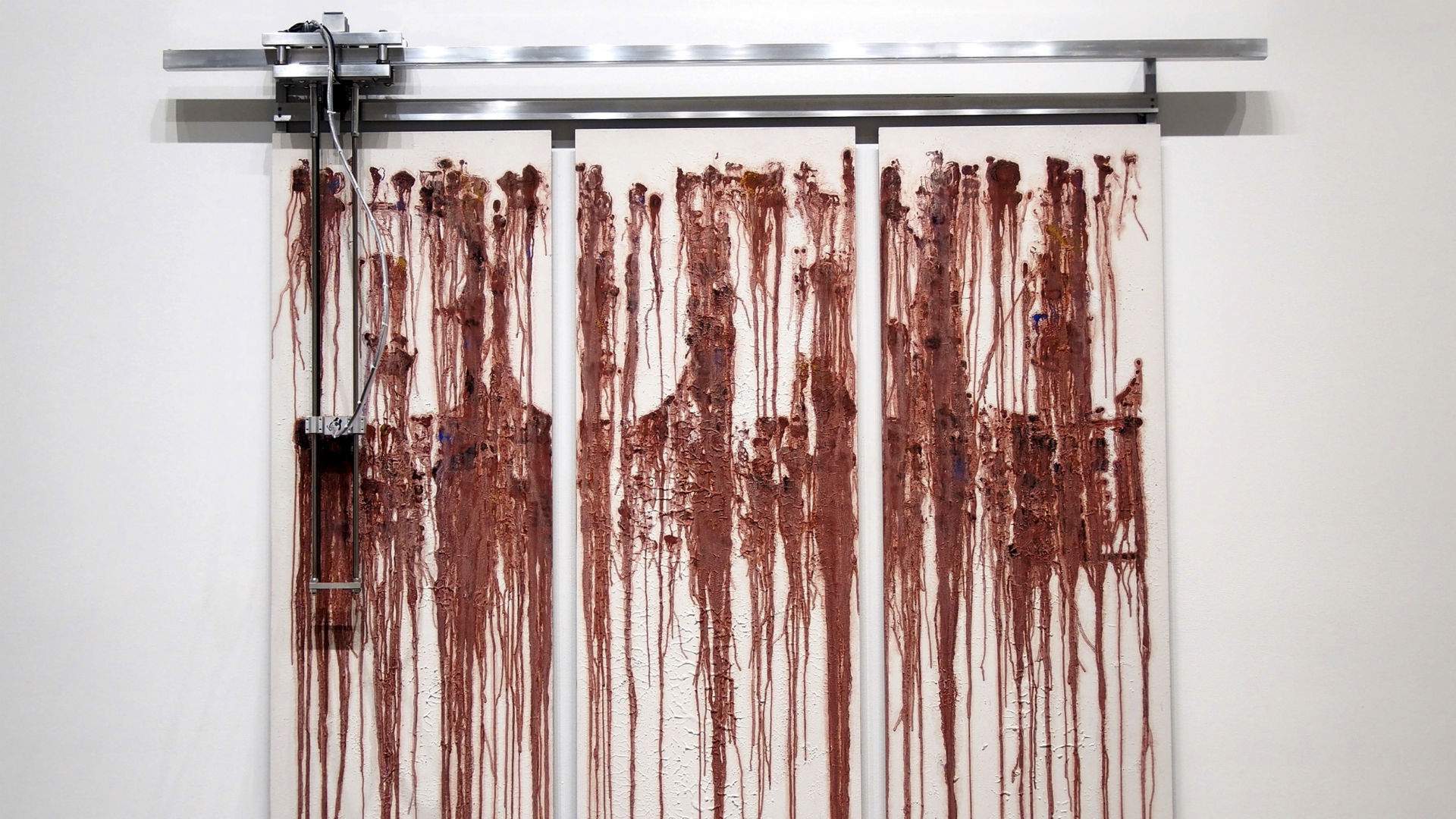
Robert Andrew, Transitional text — Buru (2016).
A CONNECTIVE REVEAL BY ROBERT ANDREW, AGNSW
This transient work changes throughout the exhibition's four months. The two soil pillars of A Connective Reveal each have a string attached, which is gradually pulling the pillars to pieces. As each layer is revealed, more and more soil falls to the ground around the work. The pillars speak to the ever-changing nature of First Nations cultures and identities, and challenge the assumptions that this culture is 'bound to the past'. Like the artwork, the First Nations past, present and future is in a constant state of motion.
At the same time, the wall across from these pillars holds another artwork that gradually reveals the 'bleeding' Gadigal word buduwa — a term which refers to 'warming one's hands by the fire and then gently squeezing the fingers of another person'. The word marks a cultural refusal to be marginalised, stereotyped or ignored. As this piece develops slowly over time, it's best to view it several times throughout the exhibition months.
The image above is of one of Andrew's previous works.


Photo by Mim Stirling. Image courtesy of the artist.
IRHAL (EXPEL), HOPE AND THE SORROW OF DISPLACEMENT BY RUSHDI ANWAR, AGNSW
Rushdi Anwar's striking work speaks directly to his experience as a Kurdish refugee, having fled his hometown after a chemical massacre in 1988. Burnt chairs are piled unstably high, giving the sense that they could topple at any moment. The wreckage is a tribute to the ruin of displacement and a home denied. At the same time, the installation offers a message of hope, as the continually rising chairs resist their destruction — a show of strength and resilience.
Anwar's installation is set against the only other artwork in the room, a series of collage prints by Eliza Hutchison, titled The difference between the eternal and the infinite. Her fractured images carry a pulse nearing chaos, creating a disorientation that then turns to confrontation in Anwar's work. Together, the two works create a dialogue about the precarious state of the modern world.

The National runs from March 29–July 21 at the AGNSW and from March 29–June 23 at Carriageworks and the MCA.
Top image: Mark Shorter, Song for von Guérard at Carriagworks. Photo by Zan Wimberley.





